Art & Culture
Amsterdam Orphanage
Published
3 years agoon
By
Kenta Fox
Aldo van Eyck designed the Amsterdam Orphanage in 1960 to create both a home for orphans and a small city. Aldo van Eyck, a CIAM* architect, put a lot of thought into post-war architecture. The Amsterdam Orphanage was therefore a chance to experience van Eyck’s own architectural visions in a large-scale project.
*Congrès internationaux d’architecture moderne (CIAM) – a foundation founded by world-class architects operating between 1928 and 1959. A platform where the principles of modern architecture and the impact of architecture on world problems are discussed.
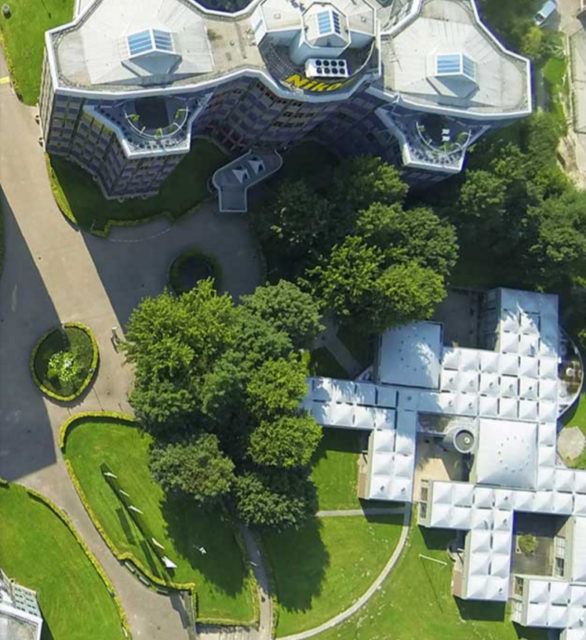
photo: wikiarquitectura.com
Van Eyck, II. He was criticizing the buildings built after World War II because they contained little human element. Therefore, while designing the Amsterdam Orphanage, he learned from the mistakes he had observed in previous architects and wanted to create a modern building with a new urban vision.
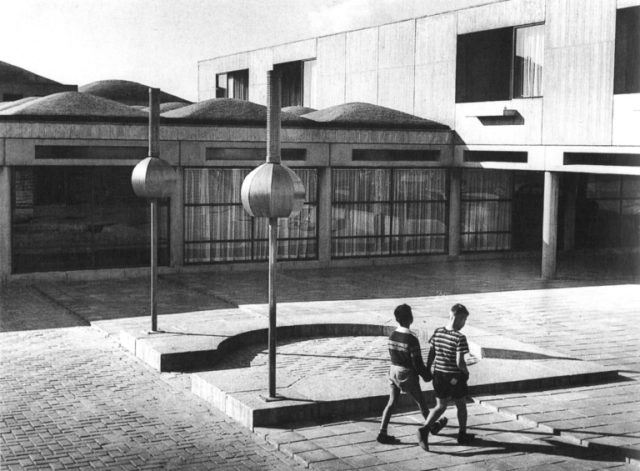
As CIAM began to lose its influence, a group of architects, including van Eyck, formed a subgroup they called Team 10 . Although each architect in the group was doing their own work, they all got together and discussed each other’s designs. The Amsterdam Orphanage project was also among the projects discussed by Team 10. Aldo van Eyck developed the Amsterdam Orphanage in line with the comments of architects with whom he grew up in the same convent and had similar architectural views.

The Amsterdam Orphanage was located in one of the suburbs of the city. The structure developed to host orphans of all ages; It is a large center with dormitories, laundry room, gym, library and administration volumes. For this reason, Amsterdam Orphanage can be described in a way as a ‘small urban study’.
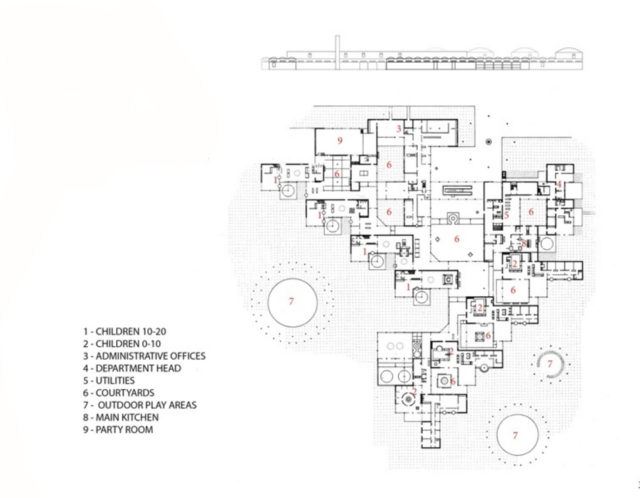
Van Eyck approached the project on an urban scale. “A house must be like a small city to be real, a city must be like a big house to be real.” He completed his design based on his philosophy. For this reason, the Amsterdam Orphanage served as both a home and a small city for the children. Van Eyck was against hierarchical structuring. That’s why he designed the Amsterdam Orphanage as a structure that includes many transition areas, is far from hierarchical structure and has many centers. Thus, he was able to produce many interaction points inside the building.

The program units in the orphanage are placed on an orthogonal (right-angled) arrangement. Each unit is placed diagonally, diagonally to each other. In this way, the buildings containing the units have more than one facade facing the outside, and a balance is achieved between the negative spaces in the orphanage and the positive spaces. In addition, each unit has its own private outdoor area. There is a large courtyard next to the unit where the dormitories are located. Entrance to the orphanage and administrative offices; connects the street, this courtyard and the dormitories.
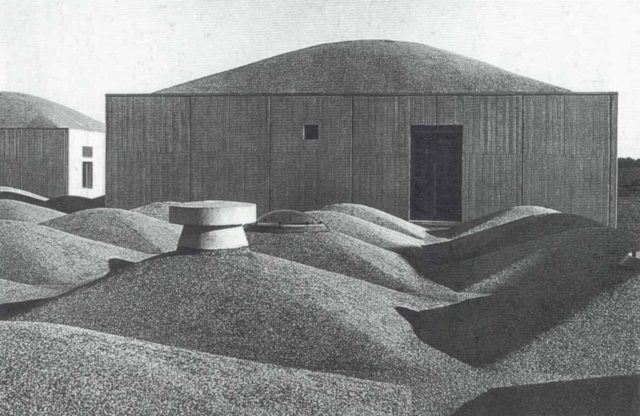
The structure is formed by the combination of two modules. The relatively smaller module forms the accommodation areas for the children. The larger module was used in public spaces. Rectangular prism-shaped modules with a precast concrete dome roof are carried by round columns on its four corners. Glass walls are used on the open facades, while the opaque facades are covered with dark brown bricks. The floors of the buildings are reinforced concrete.
Art & Culture
‘Netherlands’ Stonehenge’ Discovered: 4000-Year-Old Graveyard and Glass Beads From Mesopotamia Found
Published
2 years agoon
15/08/2023By
Kenta Fox
In the Netherlands, where excavations were started in 2017, a discovery was made that sheds light on history.
The ruins found in the region were an area determined to have been built about 4000 years ago and used for religious ceremonies. A tumulus in which 60 people were buried and a single glass bead produced only in the Mesopotamian region at that time were unearthed in the area.
Cemetery used as sundial:
- Illustration image of how the region was suffocating at that time.
The 20-meter-diameter tumulus, which was built by piling up soil and hosting the remains of 60 men, women and children, also contained some passages. The task of these passages was quite different.
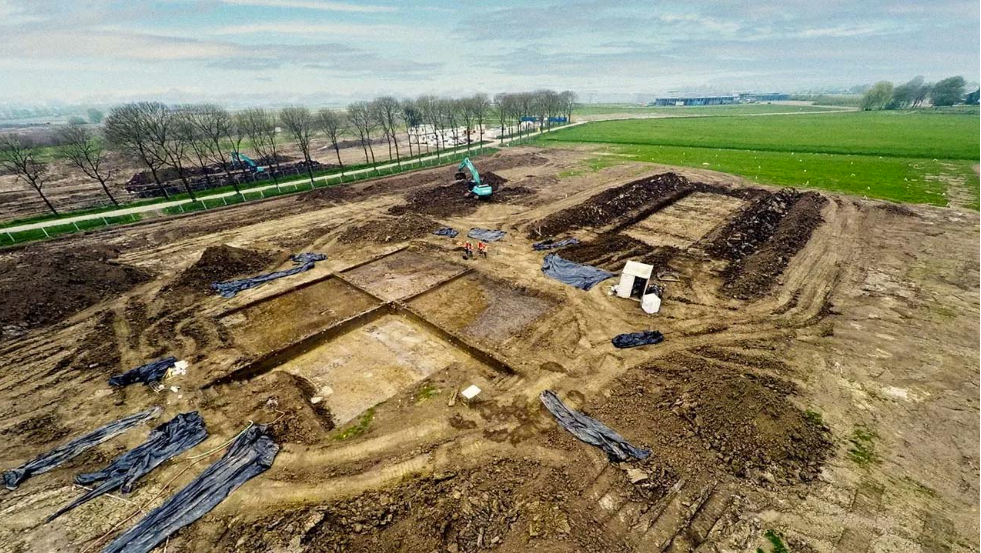
netherlands
The people of the time had built the gateways so that Sunlight would shine through them on the longest and shortest days. At the same time, the tumulus itself served as a sundial . It was shared that thanks to this watch, people can follow important times such as festivals and harvest times.
Moreover, this was not the only tumulus found. Scientists discovered two more small tumuli nearby. It was determined that these three tumuli were used as a cemetery for 800 years .
Another surprise points to Mesopotamia:
Another discovery made in the region was a glass bead produced in Mesopotamia 4000 years ago . Scientists stated that the glass bead was not produced in the Netherlands, but was brought to the region from Mesopotamia after a 5,000-year journey.

glass bead produced in Mesopotamia 4000 years ago
Art & Culture
Exploring Movie Theaters in Amsterdam
Published
2 years agoon
30/06/2023By
Berry Fox
Exploring Movie Theaters in Amsterdam. Amsterdam, the cultural hub of the Netherlands, is a city known for its vibrant arts scene. From historic landmarks to contemporary galleries, Amsterdam offers a diverse range of cultural experiences. Among its offerings, the city boasts an array of captivating movie theaters that cater to both locals and tourists. In this article, we will take you on a journey through Amsterdam’s movie theaters, highlighting their unique features, cinematic offerings, and the immersive experiences they provide.
Exploring Movie Theaters in Amsterdam
1. Pathé Tuschinski
Pathé Tuschinski stands as a true gem among Amsterdam’s movie theaters. Located in the heart of the city on Reguliersbreestraat, this iconic theater is renowned for its grand art deco architecture, ornate interiors, and lavish atmosphere. Step into a world of elegance and indulge in the latest blockbusters, arthouse films, and special screenings. With its luxurious seating, state-of-the-art projection, and immersive sound systems, Pathé Tuschinski promises an unforgettable movie-going experience.
Address: Prinsengracht 452, 1017 KE Amsterdam
Website: http://www.uitkijk.nl/
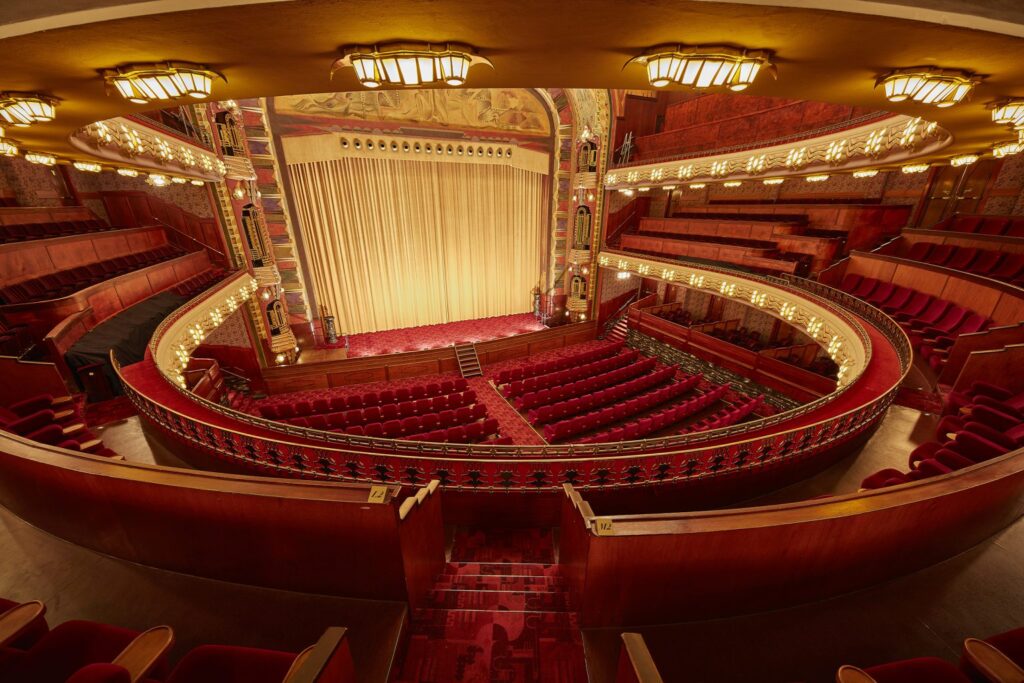
2. Eye Filmmuseum
Situated on the northern bank of the IJ River, the Eye Filmmuseum is not just a movie theater but a haven for film enthusiasts. Its striking modern architecture, featuring a futuristic white structure, instantly captures attention. The museum houses an extensive collection of films, exhibits, and interactive installations, making it a paradise for cinema lovers. With multiple screening rooms that showcase a diverse range of films, including classics, art films, and experimental works, the Eye Filmmuseum celebrates the art of filmmaking in all its forms.
Address: IJpromenade 1, 1031 KT Amsterdam
Website: https://www.eyefilm.nl/
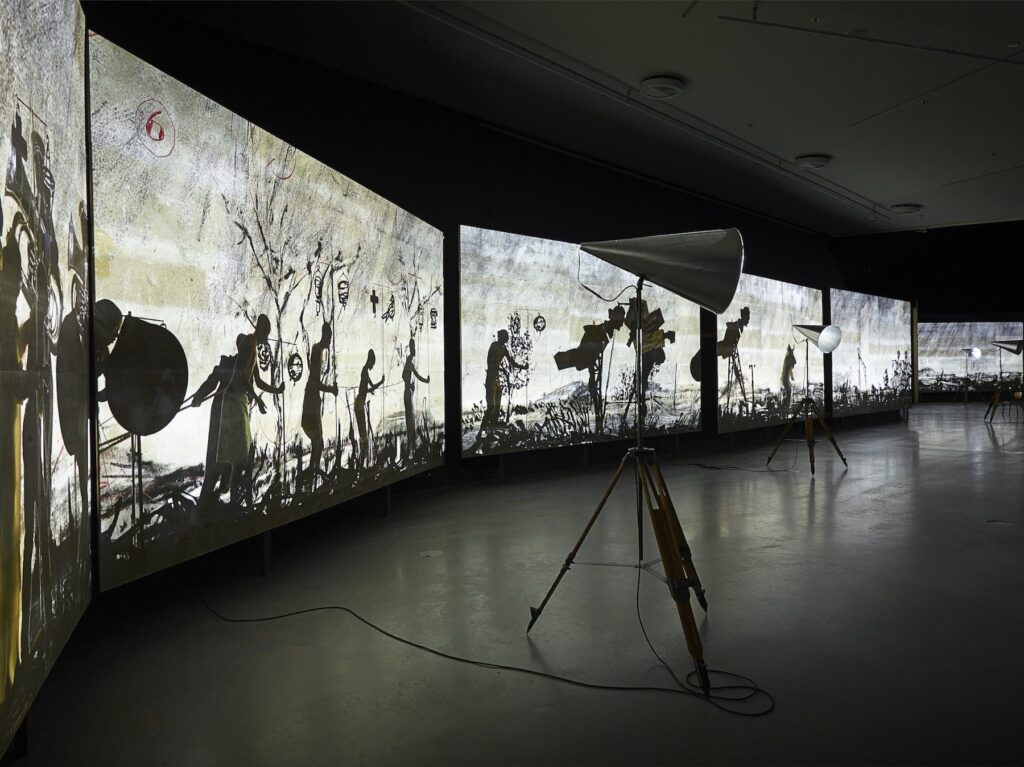
3. FilmHallen
FilmHallen, nestled in the vibrant district of Amsterdam-West, is a cultural hotspot that combines film screenings with a bustling food market and various other entertainment options. This former tram depot turned cinema boasts a relaxed and contemporary ambiance, featuring comfortable seating and excellent viewing facilities. FilmHallen showcases an eclectic mix of international and independent films, documentaries, and special events, making it a go-to destination for cinephiles seeking unique cinematic experiences.
Address: Hannie Dankbaarpassage 12, 1053 RT Amsterdam
Website: http://www.filmhallen.nl/

4. Kriterion
Kriterion is a beloved institution in Amsterdam, known for its rich history and commitment to supporting independent and arthouse cinema. Located near the University of Amsterdam, this student-run movie theater has been operating since 1945. Kriterion showcases a carefully curated selection of films, including international releases, retrospectives, and thematic film cycles. Besides its cinematic offerings, Kriterion also hosts discussions, debates, and cultural events, making it a vibrant hub for film enthusiasts and intellectuals.
Address: Roetersstraat 170, 1018 WE Amsterdam
Website: https://www.kriterion.nl/

5. De Uitkijk
For those seeking an intimate and cozy movie-watching experience, De Uitkijk is a hidden gem tucked away in the picturesque neighborhood of Prinsengracht. This historic theater, dating back to 1912, is the oldest continuously operating cinema in Amsterdam. With its vintage charm and single-screen setup, De Uitkijk offers a unique setting to enjoy art films, classics, and cult favorites. Unwind in its comfortable seats and soak up the nostalgic atmosphere while immersing yourself in the magic of the silver screen.
Address: Prinsengracht 452, 1017 KE Amsterdam
Website: http://www.uitkijk.nl/

Amsterdam’s movie theaters provide an enchanting blend of cinematic experiences, architectural splendor, and cultural significance. Whether you find yourself in a grand art deco palace like Pathé Tuschinski or a contemporary hub like the Eye Filmmuseum, each theater offers its own distinct charm and selection of films. From mainstream blockbusters to thought-provoking arthouse cinema, Amsterdam’s movie theaters cater to diverse tastes and provide an opportunity to immerse oneself in the magic of storytelling on the big screen. So, grab some popcorn, find your preferred seat, and let Amsterdam’s movie theaters transport you to captivating worlds and unforgettable cinematic journeys.
Art & Culture
Amsterdam’s Museums: A Treasure Trove of Art, History, and Culture
Published
2 years agoon
12/06/2023By
Berry Fox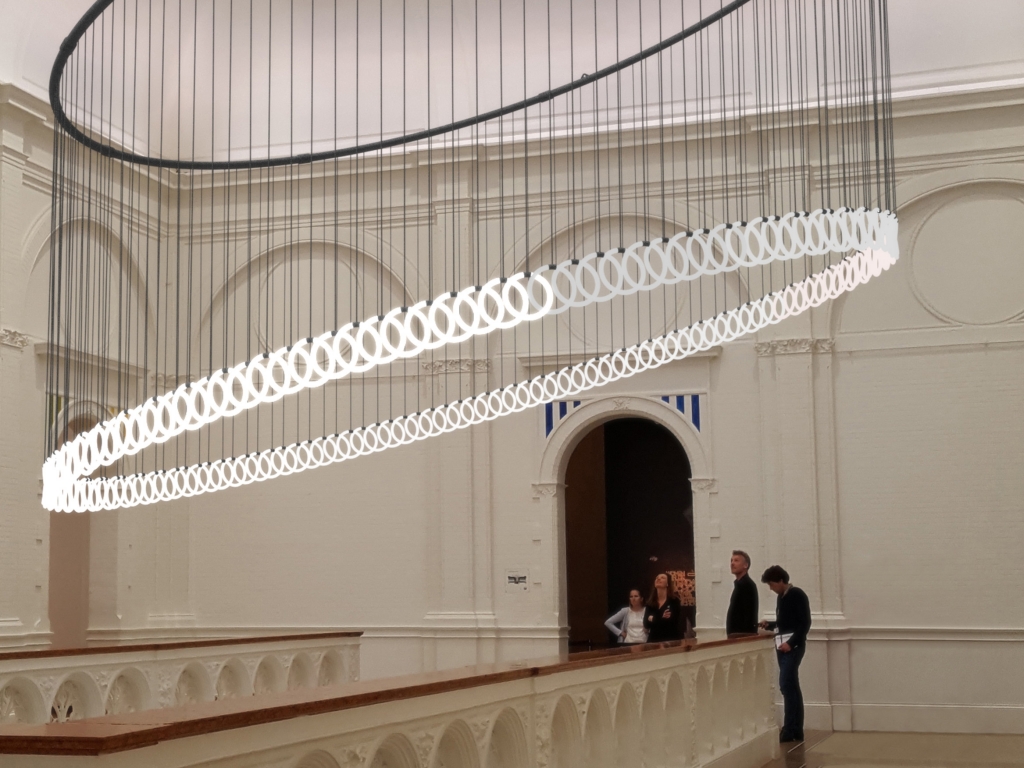
Amsterdam, the vibrant capital of the Netherlands, is renowned for its rich cultural heritage and flourishing art scene. With an impressive array of museums, the city offers visitors an unparalleled opportunity to immerse themselves in art, history, and innovation. In this article, we delve into the diverse collection of Amsterdam’s museums, highlighting their unique offerings and why they are must-visit destinations for art enthusiasts and history buffs alike.
Amsterdam’s Museums: A Journey Through Art and History
Amsterdam is home to an extraordinary collection of museums, each offering a distinct glimpse into the city’s vibrant past and artistic legacy. Here are some of the notable museums that showcase Amsterdam’s cultural riches:
Rijksmuseum
The Rijksmuseum is a crown jewel in Amsterdam’s cultural landscape. Housed in an impressive building at the Museumplein, it is the largest museum in the Netherlands. The Rijksmuseum boasts an extensive collection of Dutch art and history, including masterpieces by renowned painters such as Rembrandt, Vermeer, and Van Gogh. Visitors can marvel at iconic works like “The Night Watch” and explore the museum’s diverse exhibitions that span over 800 years of Dutch culture.
Rijksmuseum Ticket Prices:
- Adults: €20
- Children (under 18): Free
- European Youth Card (CJP): €10
- Museumkaart (Dutch Museum Card) holders: Free

Van Gogh Museum
Dedicated to the life and works of the iconic Dutch artist, the Van Gogh Museum is a must-visit for art enthusiasts. Located near the Museumplein, this museum houses the largest collection of Van Gogh’s paintings and drawings worldwide. From his early works to his famous masterpieces like “Sunflowers” and “The Starry Night,” visitors can trace the artistic evolution of this influential artist and gain a deeper understanding of his life and creative genius.
Van Gogh Museum Ticket Prices:
- Adults: €20
- Children (under 18): Free
- Museumkaart (Dutch Museum Card) holders: Free
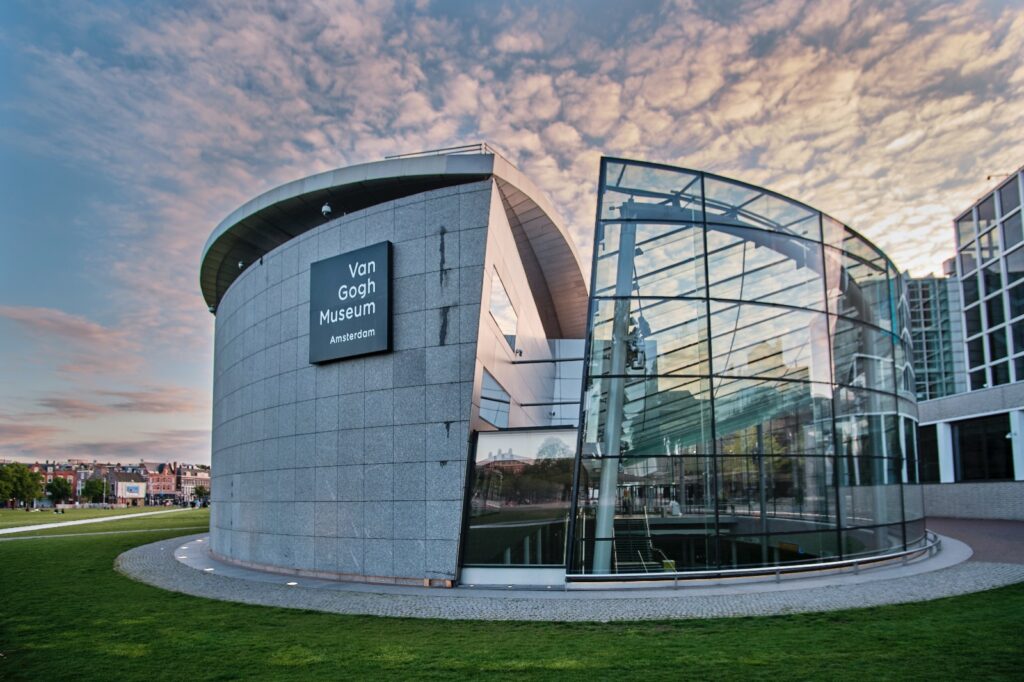
Anne Frank House
A poignant and powerful museum, the Anne Frank House offers a glimpse into the life of Anne Frank, a young Jewish girl who hid from the Nazis during World War II. Located in the actual house where Anne Frank and her family sought refuge, the museum provides a sobering experience, presenting the story of the Holocaust through the eyes of a courageous young girl. The Anne Frank House serves as a reminder of the importance of tolerance, compassion, and the preservation of human rights.
Anne Frank House Ticket Prices:
- Adults: €14
- Children (10-17 years old): €7
- Children (0-9 years old): Free

Stedelijk Museum
For lovers of modern and contemporary art, the Stedelijk Museum is a treasure trove of creativity. Located in the Museum Quarter, it houses an extensive collection of modern and contemporary artworks, including paintings, sculptures, photography, and design objects. The museum showcases influential art movements and hosts temporary exhibitions that highlight emerging artists and innovative perspectives. With its dynamic displays and engaging programs, the Stedelijk Museum is a vibrant hub of artistic exploration.
Stedelijk Museum Ticket Prices:
- Adults: €18.50
- Museumkaart (Dutch Museum Card) holders: Free
- Children (under 18): Free
- CJP cardholders: €9.25
- I Amsterdam City Card holders: Free

Rembrandt House Museum
Step into the world of the Dutch master at the Rembrandt House Museum. This meticulously restored 17th-century house was the residence and studio of Rembrandt van Rijn, one of history’s greatest painters. Visitors can explore the artist’s living quarters, view his etchings, and gain insights into his techniques and artistic process. The museum also hosts exhibitions featuring Rembrandt’s contemporaries and provides a comprehensive understanding of the Golden Age of Dutch art.
Rembrandt House Museum Ticket Prices:
- Adults: €15
- Children (under 6): Free
- Children (6-17): €5
- Museumkaart (Dutch Museum Card) holders: Free
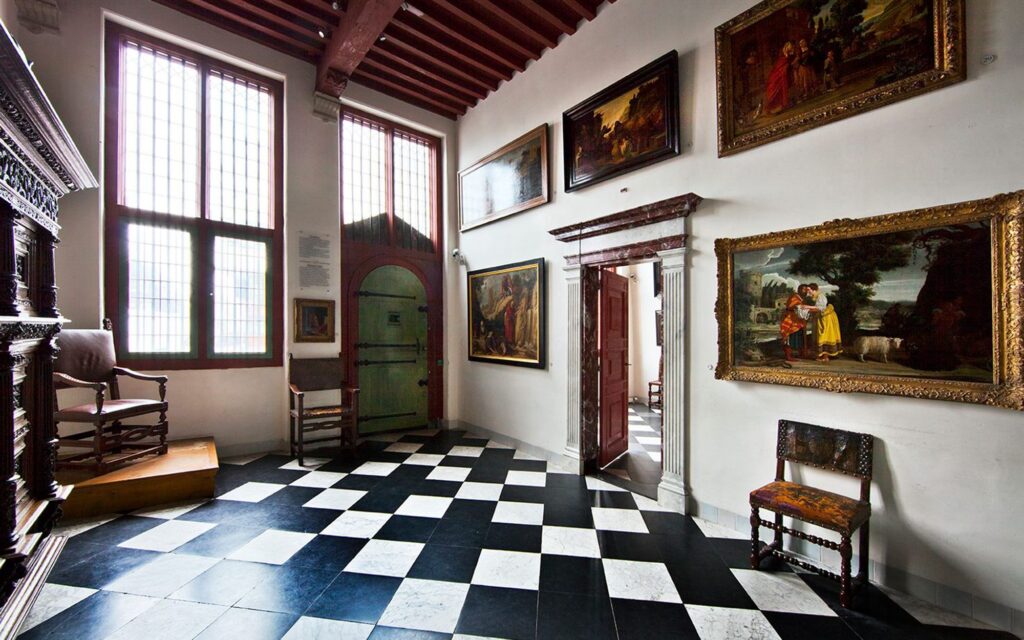
Amsterdam’s museums offer an extraordinary cultural experience, inviting visitors to journey through centuries of art, history, and innovation. Whether you’re marveling at the Dutch Masters at the Rijksmuseum, immersing yourself in the vibrant colors of Van Gogh’s works, or reflecting on the poignant story of Anne Frank, each museum presents a unique narrative and a deeper understanding of Amsterdam’s cultural heritage. So, when you visit Amsterdam, make sure to carve out time to explore these magnificent museums and indulge
Art & Culture
Exploring the Timeless Beauty of Dutch Architecture
Published
2 years agoon
13/05/2023By
Berry Fox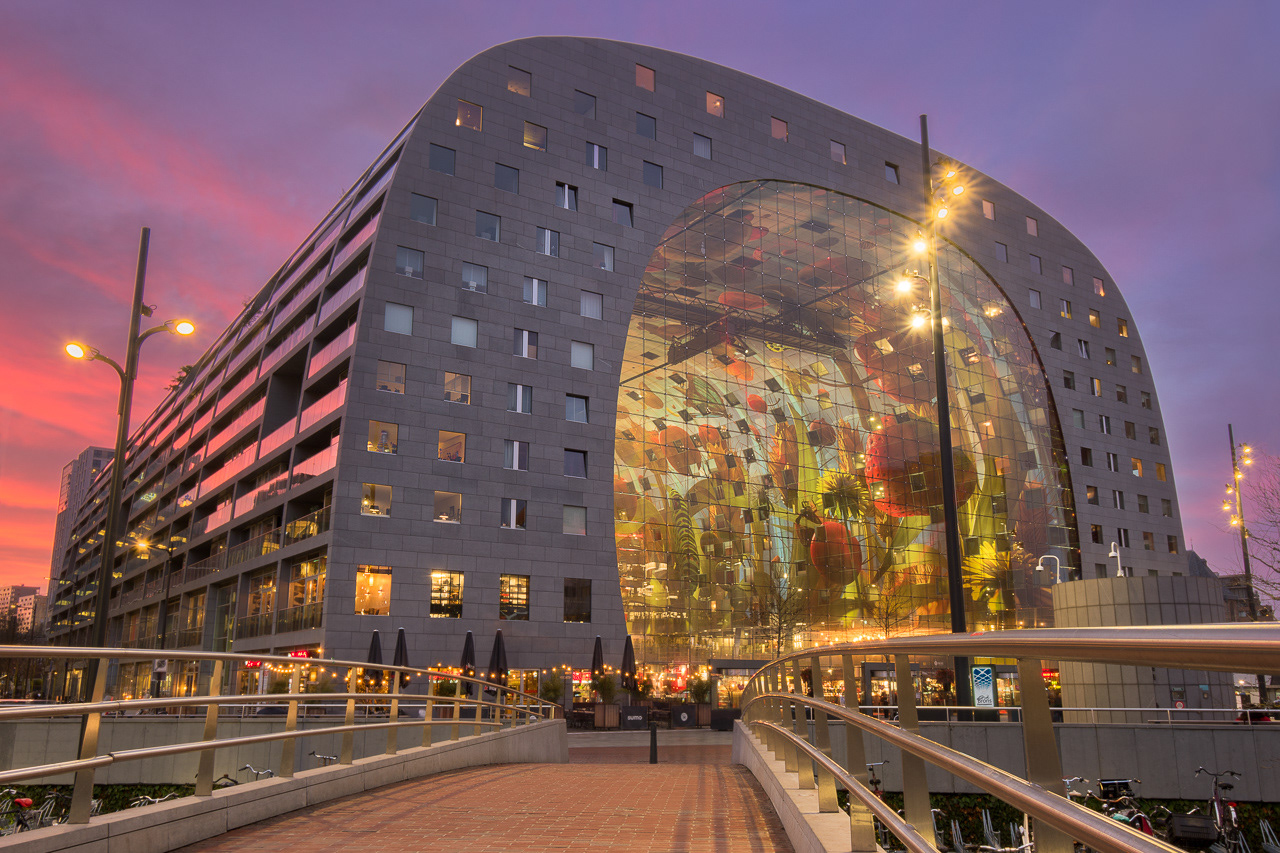
Exploring the Timeless Beauty of Dutch Architecture. The Netherlands is home to some of the most stunning and innovative architecture in the world. From medieval cathedrals to modernist buildings, Dutch architecture is a testament to the country’s rich cultural heritage and contemporary design prowess. In this article, we will take a closer look at the unique characteristics of Dutch architecture and explore some of the most iconic buildings in the country.
One of the defining features of Dutch architecture is its focus on functionality and practicality. Dutch architects have always prioritized the needs of the people who will use the building, whether it is a residential house or a public space. This approach has led to the creation of spaces that are not only visually striking but also functional and comfortable.
One of the most iconic examples of Dutch architecture is the Amsterdam Canal Houses, which date back to the 17th century. These narrow, tall houses were built along the canals of Amsterdam and are characterized by their gabled facades, ornate decorations, and stepped roofs. They were designed to maximize the limited space available in the city center and to create a sense of grandeur and wealth for their owners.
Another important period in Dutch architecture is the Art Nouveau movement of the late 19th and early 20th centuries. This style was characterized by its use of flowing lines, floral motifs, and intricate decorations. The most famous example of Art Nouveau architecture in the Netherlands is the Rietveld Schröder House in Utrecht, designed by Gerrit Rietveld in 1924. This house is a masterpiece of modernist architecture and a UNESCO World Heritage Site.
In the post-World War II period, Dutch architecture underwent a radical transformation with the emergence of the Dutch Structuralism movement. This movement rejected the modernist emphasis on form and function and instead focused on the underlying structure of the building. The most famous example of Dutch Structuralism is the Centraal Beheer building in Apeldoorn, designed by Herman Hertzberger in 1972. This building features a modular design and an open-plan layout, which was a departure from the traditional office building.

Centraal Beheer
In recent years, Dutch architecture has continued to evolve with the rise of sustainable design and the use of new technologies. The Rotterdam Market Hall, designed by MVRDV, is a prime example of this trend. The building features a stunning arched roof and an innovative system for collecting rainwater, which is then used to irrigate the surrounding park.
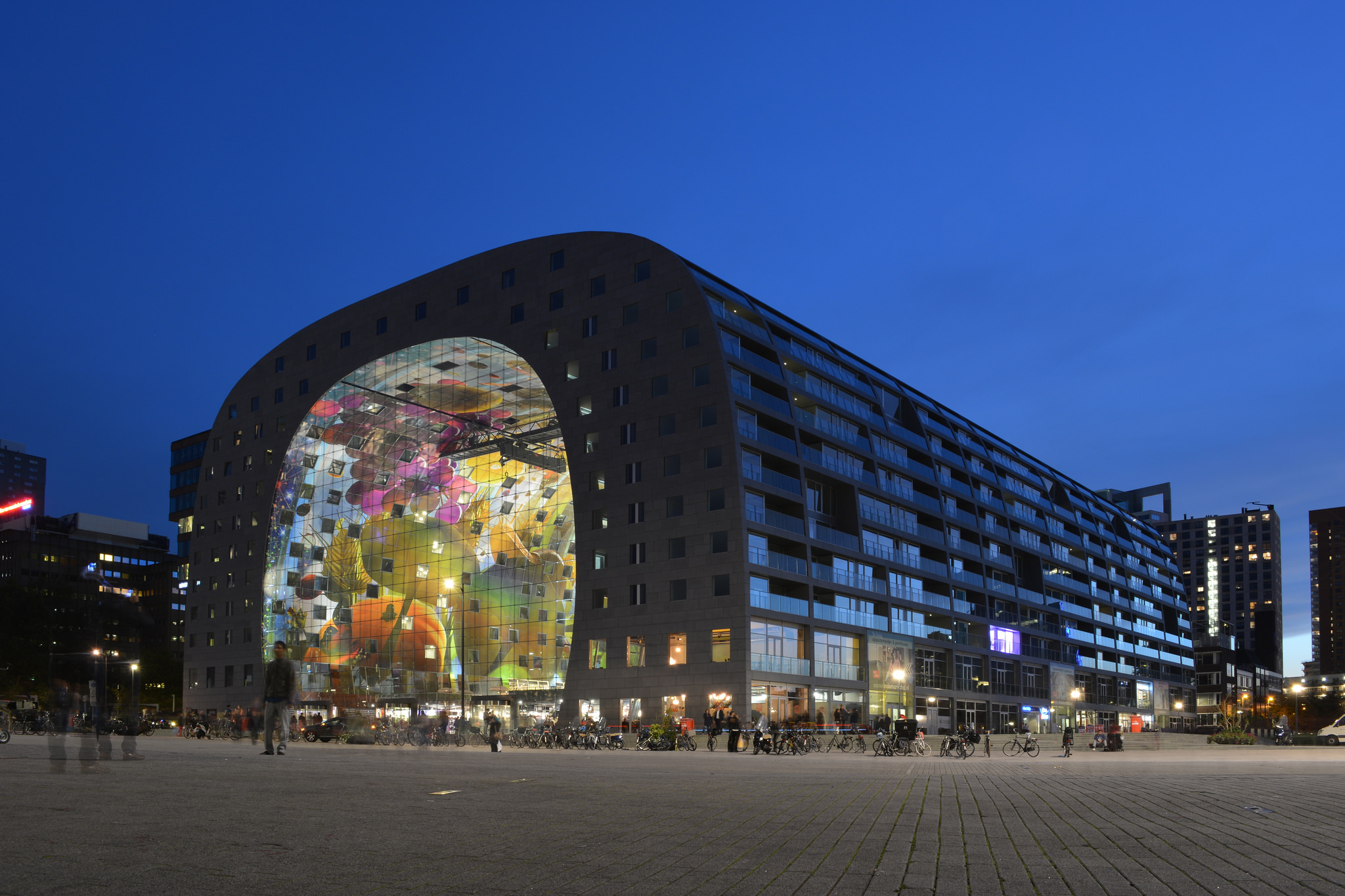
Rotterdam Market Hall
In conclusion, Dutch architecture is a rich and diverse field that spans centuries and encompasses a wide range of styles and movements. From the ornate Canal Houses of Amsterdam to the modernist Rietveld Schröder House and the sustainable Rotterdam Market Hall, Dutch architecture continues to inspire and captivate people from around the world.
Art & Culture
Tipping in the Netherlands: A Guide to Showing Appreciation for Great Service
Published
2 years agoon
12/05/2023By
Berry Fox
In the Netherlands, tipping is not a compulsory practice, but it is always appreciated if you are happy with the service provided. Unlike other countries, where tipping is often expected, in the Netherlands, it is not customary to tip more than a few euros, and sometimes, not at all. In this article, we will explore the tipping culture in the Netherlands and provide you with some guidance on when and how much to tip.
First of all, it is important to note that service charges are typically included in the prices of food and drinks in the Netherlands. This means that the total amount you see on your bill already includes a service charge, which usually ranges from 5% to 10%. In most cases, this means that there is no need to leave a tip on top of the service charge. However, if you received excellent service, you are always welcome to leave a little extra.
When it comes to restaurants, a good rule of thumb is to leave a 5-10% tip if you are satisfied with the service. This is especially true if the server went above and beyond to make your dining experience memorable. However, it is not necessary to tip if you were not happy with the service. In this case, it is better to speak to the manager or owner and let them know what went wrong.
It is also worth noting that many Dutch people round up their bill when paying in cash. For example, if your bill is €18.50, you may choose to pay €20 and let the server keep the change as a small tip. This is a common practice and shows your appreciation for the service provided.

When it comes to bars and cafes, tipping is not expected, but again, it is always appreciated. If you are happy with the service, it is common to leave a euro or two per drink. However, if you are paying for a round of drinks for a group of people, it is not necessary to leave a tip for each individual drink.
Finally, when it comes to other service providers such as hairdressers, taxi drivers, and hotel staff, tipping is not expected, but it is always appreciated. A small tip of a few euros is a nice gesture to show your appreciation for the service provided.
In conclusion, tipping in the Netherlands is not compulsory, but it is always appreciated if you are satisfied with the service provided. Service charges are usually included in the prices of food and drinks, so tipping is not always necessary. However, leaving a small tip of 5-10% in restaurants or rounding up your bill in cash is a common practice and a nice way to show your gratitude. Remember, if you were not happy with the service, it is better to speak to the manager or owner rather than leaving a poor tip.
Art & Culture
Discovering the Magnificent Monuments of the Netherlands
Published
2 years agoon
02/05/2023By
Berry Fox
Discovering the Magnificent Monuments of the Netherlands. The Netherlands is a country with a rich history, and as a result, it boasts a wide range of historical monuments that reflect its past. From ancient castles and forts to impressive palaces and churches, the Netherlands has a lot to offer to visitors interested in architecture, history, and culture.
One of the most famous monuments in the Netherlands is the Rijksmuseum, located in Amsterdam. This museum houses an impressive collection of art and historical artifacts, including paintings by Dutch Masters like Rembrandt, Vermeer, and Van Gogh. The building itself is a work of art, with its grand entrance hall, marble floors, and stunning stained glass windows.
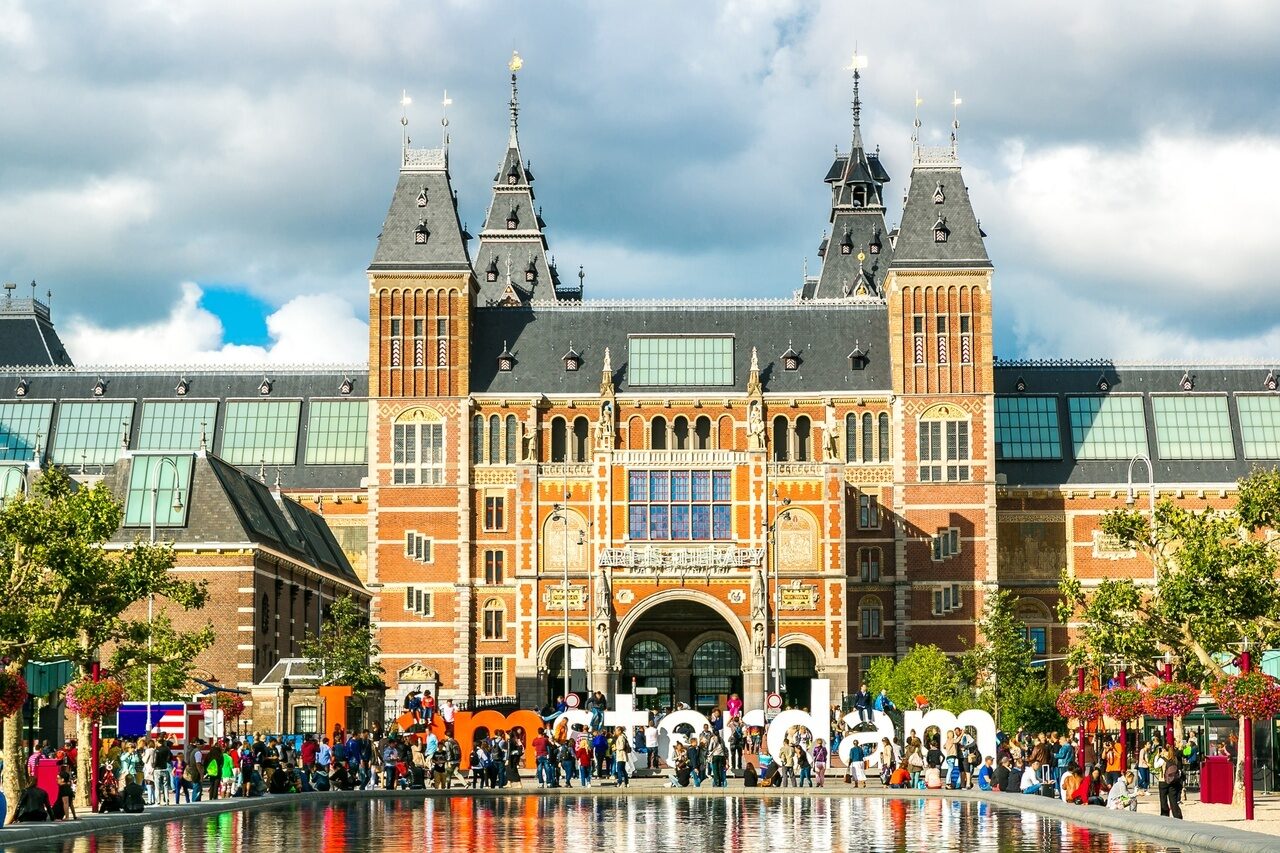
Another notable monument in Amsterdam is the Anne Frank House. This museum is dedicated to the life of Anne Frank, who wrote her famous diary while hiding from the Nazis during World War II. Visitors can tour the secret annex where Anne and her family lived in hiding for two years, and learn about the experiences of Jewish people during the war.
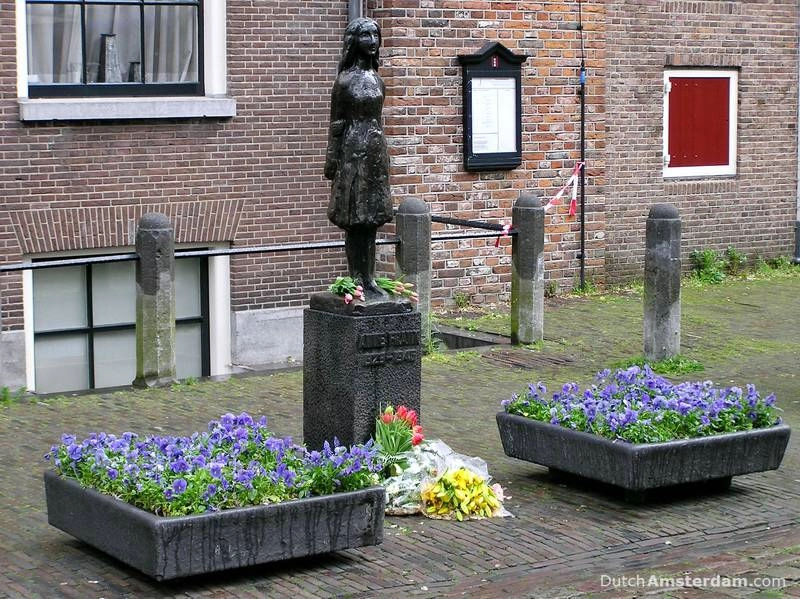 Moving outside of Amsterdam, there are many other notable monuments to explore. In The Hague, visitors can see the Peace Palace, home to the International Court of Justice. The palace was built in 1913 and is a beautiful example of neo-Renaissance architecture. Nearby is the Binnenhof, a Gothic-style complex of buildings that houses the Dutch parliament.
Moving outside of Amsterdam, there are many other notable monuments to explore. In The Hague, visitors can see the Peace Palace, home to the International Court of Justice. The palace was built in 1913 and is a beautiful example of neo-Renaissance architecture. Nearby is the Binnenhof, a Gothic-style complex of buildings that houses the Dutch parliament.

In the city of Utrecht, the Dom Tower is a must-see monument. This 14th-century bell tower is the tallest church tower in the Netherlands, standing at over 112 meters tall. Visitors can climb to the top for stunning views of the city below.

Other notable monuments include the Castle De Haar, a stunning 19th-century castle that was restored to its former glory in the early 20th century, and the Wouda Steam Pumping Station, a UNESCO World Heritage Site that is still in operation today.

One monument that cannot be missed is the Kinderdijk windmills. This UNESCO World Heritage Site features 19 windmills that were built in the 18th century to help control flooding in the area. Visitors can tour the windmills and learn about their history and operation.

In conclusion, the Netherlands has an impressive collection of monuments that reflect its rich history and culture. From famous museums and historical buildings to ancient castles and windmills, there is something for everyone to enjoy. Whether you are a history buff, an architecture enthusiast, or simply looking for a unique cultural experience, the Netherlands is a must-visit destination.
Art & Culture
May 1 is a public holiday in the Netherlands?
Published
2 years agoon
01/05/2023By
Berry Fox
May 1 is a public holiday in the Netherlands? May 1st, also known as Labor Day or “Dag van de Arbeid” in Dutch, is an official public holiday in the Netherlands. This day is dedicated to honoring the contributions of workers and celebrating the labor movement. Here’s a closer look at how the Dutch celebrate Labor Day and what this holiday means to them.
History of Labor Day in the Netherlands The origins of Labor Day can be traced back to the late 19th century, when workers across Europe began organizing and fighting for better wages, working conditions, and labor rights. In the Netherlands, Labor Day was first celebrated in 1890, with workers organizing parades, rallies, and other events to promote their cause. Over the years, Labor Day has become an important symbol of the Dutch labor movement and a reminder of the struggles and achievements of workers throughout history.
Celebrating Labor Day in the Netherlands On May 1st, many Dutch people take the day off work to celebrate Labor Day with friends and family. Some may attend parades or rallies organized by labor unions or political parties. These events often feature speeches, music, and other forms of entertainment, and they provide a space for workers to come together and celebrate their solidarity and achievements.

In some cities, special Labor Day markets are held, where workers and craftspeople sell their wares and showcase their skills. These markets offer a chance for people to support local businesses and learn more about the work that goes into creating handmade goods.
Other Dutch people may choose to spend Labor Day relaxing at home, enjoying a barbecue or picnic with loved ones, or simply taking a break from the stresses of work. For many, Labor Day is an opportunity to reflect on the importance of labor rights and the ongoing struggle for fair and equitable working conditions.
Labor Day Traditions in the Netherlands One of the most iconic Labor Day traditions in the Netherlands is the “mug cake.” This simple dessert is made by mixing flour, sugar, and milk in a mug and then cooking it in a microwave. The tradition of eating mug cakes on Labor Day dates back to the 1930s, when workers who couldn’t afford expensive pastries began making their own cakes at home. Today, mug cakes remain a beloved part of Labor Day celebrations in the Netherlands.
In conclusion, May 1st is an important public holiday in the Netherlands, dedicated to celebrating workers and their contributions to society. Whether attending parades and rallies, enjoying a mug cake, or simply taking a day off to relax, Labor Day provides an opportunity for Dutch people to come together and reflect on the importance of labor rights and fair working conditions.
Art & Culture
Green and Sustainable: The Netherlands Garden Management
Published
2 years agoon
01/05/2023By
Berry Fox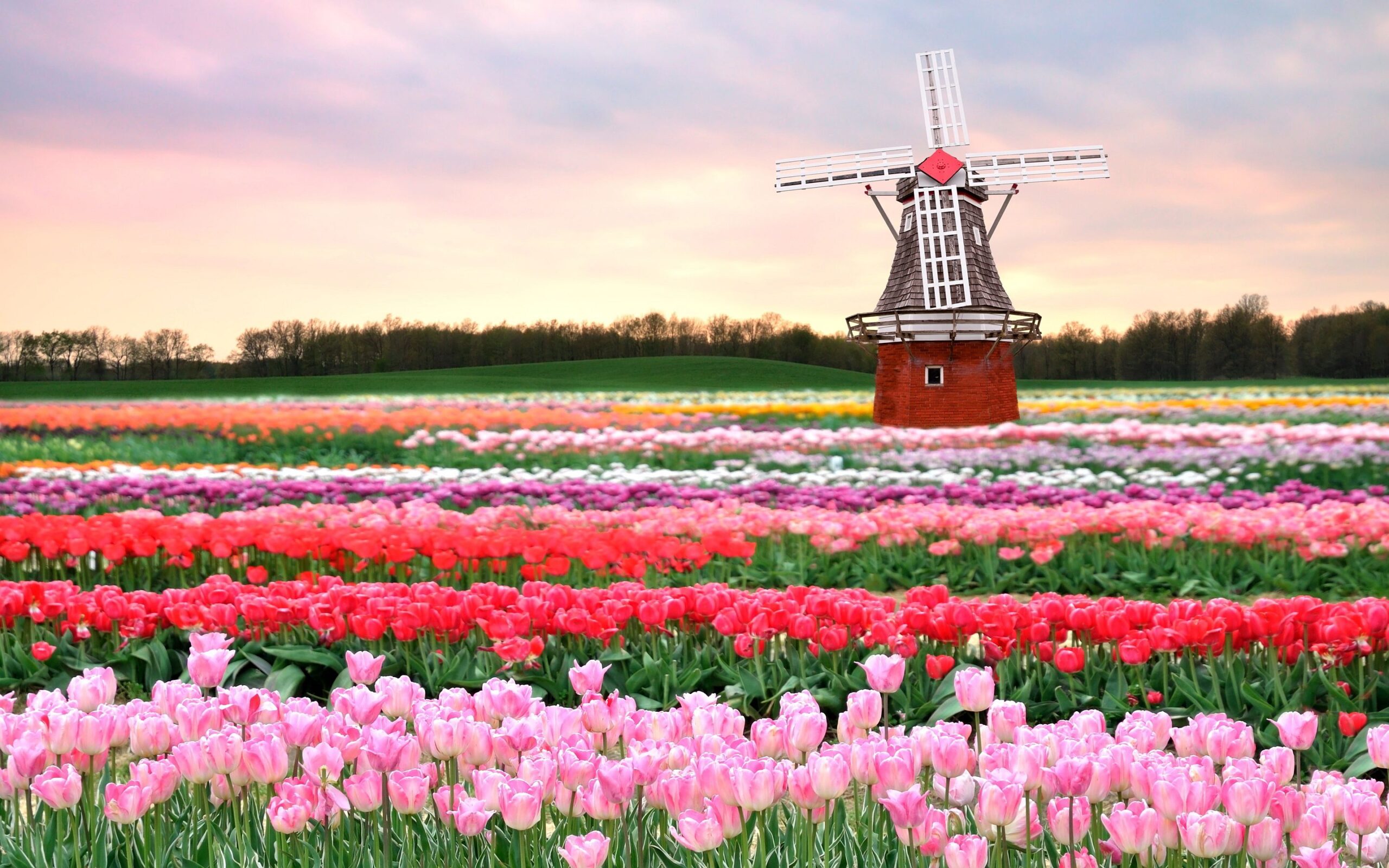
Green and Sustainable: The Netherlands Garden Management. The Netherlands is well-known for its beautiful gardens and green spaces. But what many people may not know is that behind the beauty lies a highly regulated and sustainable approach to garden management. The Dutch take their gardens seriously, and for good reason. A well-managed garden not only looks beautiful, but it also contributes to the health of the environment and the well-being of the people who enjoy it.
One of the key principles of garden management in the Netherlands is sustainability. This means that gardens are designed and maintained in a way that minimizes harm to the environment and supports biodiversity. For example, many gardens in the Netherlands use native plants that are well-suited to the local climate and require less water and maintenance. This not only helps to conserve water resources but also provides habitats for local wildlife.

Another important aspect of garden management in the Netherlands is water management. As a low-lying country with a high water table, the Netherlands is prone to flooding. Gardens are designed to help manage rainwater runoff, which can help prevent flooding and waterlogging. This may include features such as rain gardens, green roofs, and permeable paving. These features help to absorb rainwater and allow it to filter back into the ground, rather than running off into the streets and sewers.
In addition to sustainable design, garden management in the Netherlands also involves regular maintenance. Many gardens are managed by professional gardeners who are trained to use sustainable techniques and practices. This may include tasks such as pruning trees, trimming hedges and bushes, and mowing the lawn. Regular maintenance helps to keep the garden healthy and beautiful while also supporting biodiversity.
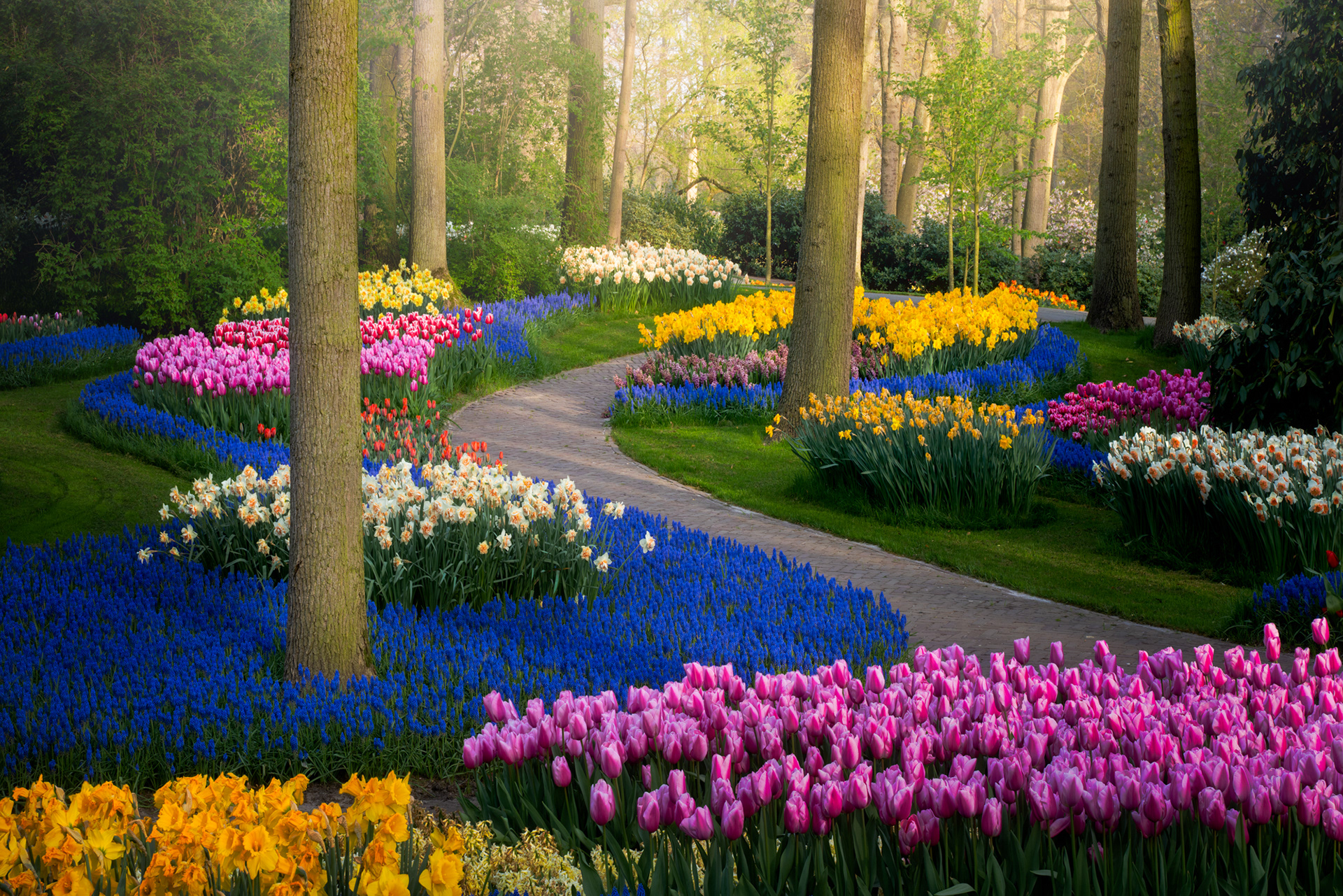
Overall, garden management in the Netherlands is a holistic approach that prioritizes sustainability, biodiversity, and professional maintenance. This approach not only benefits the environment but also contributes to the health and well-being of the people who enjoy these spaces. The Netherlands’ commitment to sustainable garden management is a shining example of how we can create beautiful and functional spaces while also protecting the planet.
Art & Culture
Why some people hate living in the Netherlands?
Published
2 years agoon
30/04/2023By
Berry Fox
Why some people hate living in the Netherlands? It is not accurate to say that people hate living in the Netherlands. In fact, the Netherlands is consistently ranked as one of the happiest and most livable countries in the world. However, like any country, there are some people who may not enjoy living there for a variety of reasons.
Some common complaints about living in the Netherlands may include the weather, which can be damp and chilly, especially in the winter months. Additionally, the cost of living can be quite high, particularly in cities like Amsterdam. Some people may also find the Dutch culture and customs to be different from what they are used to, which can lead to feelings of homesickness or culture shock.
Overall, it is important to note that individual experiences and perspectives will vary, and it would be unfair to generalize and say that people hate living in the Netherlands.

The Netherlands is consistently ranked as one of the happiest and most livable countries in the world, and it has a high quality of life that many people enjoy.
While there may be some individuals who have had negative experiences or difficulties adjusting to life in the Netherlands, it is important to acknowledge that this is not the case for everyone. It is also important to recognize that people’s experiences and perspectives will vary based on a variety of factors such as personal preferences, cultural background, and life circumstances.
Rather than focusing on why people hate living in the Netherlands, it may be more productive to explore the challenges that some individuals may face when living in a new country and how they can be addressed. For example, language barriers, cultural differences, and homesickness can all be obstacles for expats and immigrants in the Netherlands, but there are resources and support systems available to help individuals navigate these challenges.
Ultimately, the Netherlands is a diverse and welcoming country with a rich culture and history, and it is important to approach discussions about living there with an open mind and a willingness to learn and understand different perspectives.
Why some people hate living in the Netherlands?
The Netherlands is a small, densely populated country in Western Europe, known for its liberal culture, vibrant cities, and cycling culture. The country is famous for its canals, tulips, and windmills. It has a high standard of living, with a well-developed economy, excellent healthcare, and a good education system. However, some people might find living in the Netherlands challenging due to the following reasons:
1. Climate: The Netherlands has a maritime climate, which means that it can be rainy and windy most of the year. Some people might find the climate gloomy and depressing.
2. High cost of living: The cost of living in the Netherlands is relatively high compared to other European countries. Housing, food, and transportation can be expensive, which might be challenging for some people.
3. Language: Dutch is the official language in the Netherlands, and not everyone might be fluent in it. It can be difficult to integrate into the culture and make friends without knowing the language.
4. Cultural differences: The Netherlands has a distinct culture, which might be different from what some people are used to. Some people might find it difficult to adjust to the Dutch way of life.
It is essential to understand that everyone’s experience of living in the Netherlands is different, and it’s okay to not enjoy living in a particular country. If you’re struggling to adapt, it might be helpful to seek advice and support from people who have experienced similar challenges.
What to do to avoid cultural shock in the Netherlands?
Moving to a new country can be an exciting and challenging experience. Culture shock is a common experience when moving to a new country, and it can be especially daunting if you are moving to a country with a culture that is vastly different from your own. Here are some tips on how to avoid culture shock when moving to the Netherlands:
1. Learn about the culture: Before you move, it’s a good idea to learn about Dutch culture, customs, and traditions. This can help you to understand and appreciate the cultural differences that you will encounter.
2. Language learning: Learning the Dutch language can be an excellent way to connect with the local culture and to communicate more effectively with locals. Take advantage of language courses offered in your area or consider using language learning apps like Duolingo or Babbel.
3. Connect with locals: Building relationships with locals can help you to feel more connected to your new home and can also provide a support system. Joining social clubs, attending local events, or volunteering can be great ways to meet new people and get involved in the community.
4. Stay open-minded: Try to approach cultural differences with an open mind and a willingness to learn. Avoid making assumptions or judging cultural practices without fully understanding them.
5. Stay connected with your own culture: While it’s important to embrace your new home and culture, it’s also important to stay connected with your own cultural heritage. This can help you to maintain a sense of identity and provide a source of comfort and support.
Moving to a new country can be an enriching and rewarding experience, but it can also be challenging. By staying open-minded, learning about the culture, and building relationships with locals, you can minimize the impact of culture shock and make a smooth transition to your new home in the Netherlands.

What to do to love the Netherlands?
The Netherlands is a beautiful and vibrant country with a rich culture and history. If you are looking to fall in love with the Netherlands, here are some tips to help you do just that:
1. Explore the country: The Netherlands is a small country, but there is plenty to see and explore. Take advantage of the country’s excellent public transportation system and visit some of its famous cities like Amsterdam, Rotterdam, and Utrecht. You can also venture out into the countryside and visit picturesque towns and villages.
2. Embrace the culture: The Netherlands has a unique culture with a long history of art, music, and literature. Attend local events and festivals, visit museums and art galleries, and try the local cuisine. The Dutch are also known for their love of cycling, so rent a bike and explore the country on two wheels.
3. Connect with the locals: The Dutch are generally friendly and welcoming people. Strike up a conversation with locals, join social clubs or activities, or volunteer in your community. Making connections with locals can help you feel more at home in the Netherlands.
4. Learn the language: Although most Dutch people speak English, learning the Dutch language can help you to connect more deeply with the local culture and people. Consider taking language classes or using language learning apps to improve your Dutch language skills.
5. Appreciate the natural beauty: The Netherlands is known for its stunning landscapes, including its tulip fields, windmills, and canals. Take a stroll through a park, visit the beach, or take a boat tour to appreciate the country’s natural beauty.
By exploring the country, embracing the culture, connecting with locals, learning the language, and appreciating the natural beauty, you can fall in love with the Netherlands and all that it has to offer.

How long does it take to get used to a new country?
The amount of time it takes to get used to a new country can vary greatly depending on the individual and their circumstances. Some people may feel comfortable and adjusted to their new home within a few weeks or months, while for others it may take a year or more to fully adapt to their new surroundings.
Factors that can impact the amount of time it takes to adjust to a new country include:
1. Cultural differences: If the culture of the new country is vastly different from one’s own, it may take longer to adjust to the new way of life.
2. Language barriers: Learning a new language or adapting to a different dialect can take time, and may impact one’s ability to communicate and feel comfortable in their new environment.
3. Support network: Having a strong support network of friends, family, or colleagues can make a big difference in adjusting to a new country.
4. Personal resilience: Personal factors such as flexibility, openness to new experiences, and a positive attitude can also impact how quickly one adjusts to a new country.
It is important to note that the process of adjusting to a new country can be challenging and may involve periods of homesickness or culture shock. However, with time and effort, most people are able to adapt and thrive in their new surroundings. It is also important to seek support if needed, such as counseling or support groups, to help manage any difficulties or challenges that may arise during the adjustment period.
Art & Culture
Castle de Haar: A Majestic Icon of the Netherlands
Published
3 years agoon
24/04/2023By
Berry Fox
Castle de Haar: A Majestic Icon of the Netherlands. If you’re planning a visit to the Netherlands, make sure to add Castle de Haar to your itinerary. This magnificent castle is located just outside the city of Utrecht and is one of the most stunning examples of medieval architecture in the country. Its impressive size, ornate decoration, and stunning gardens make it a must-see attraction for visitors.
Castle de Haar History
The castle was originally built in the 14th century by the van de Haar family, but fell into disrepair over the centuries. In the late 1800s, Baron Etienne van Zuylen van Nyevelt van de Haar inherited the castle and decided to restore it to its former glory. He hired the famous Dutch architect Pierre Cuypers to design and oversee the renovation, which took over 20 years to complete.
The castle was transformed into a luxurious palace, complete with grand halls, a beautiful chapel, and ornate bedrooms. Cuypers also added many modern features, such as electricity and central heating. The castle was finally completed in 1912 and became a popular destination for royalty, celebrities, and other wealthy individuals.
![]()
Castle de Haar Today
Today, Castle de Haar is open to the public for tours and events. Visitors can explore the castle’s lavish interior, which includes a grand entrance hall, a stunning dining room, and a beautiful library. The castle’s collections include art, furniture, and other artifacts from the van Zuylen family’s collection.
One of the highlights of Castle de Haar is its stunning gardens. The castle’s grounds are home to a variety of gardens, including a rose garden, a formal garden, and a maze. The gardens are meticulously maintained and provide a beautiful backdrop for photos and relaxation.
![]()
Events at Castle de Haar
Throughout the year, Castle de Haar hosts a variety of events, including concerts, exhibitions, and fairs. One of the most popular events is the annual Christmas fair, which takes place in December and features dozens of vendors selling unique gifts and decorations.
![]()
Conclusion
Castle de Haar is a majestic icon of the Netherlands and a must-see attraction for visitors to the country. Its rich history, stunning architecture, and beautiful gardens make it a popular destination for tourists from all over the world. Whether you’re interested in history, architecture, or simply want to enjoy a beautiful day in the gardens, Castle de Haar is a destination that you won’t want to miss.
Castle De Haar Ticket Prices
The ticket prices for Castle de Haar in the Netherlands vary depending on the type of ticket and age of the visitor. As of my knowledge cutoff date of September 2022, the standard ticket prices were:
- Adults: € 18,00
- Children (4-12 years old): € 12,50
- Children (under 4 years old): free
- Museum Card: free
- Parking: 6 €
There are also discounts available for groups and students. Additionally, there may be additional charges for special exhibitions or events.
Please note that these prices are subject to change, so it’s always a good idea to check the official website for the latest information.
Where is the Castle De Haar in Netherlands?
Castle de Haar is located in the province of Utrecht in the Netherlands. It is situated in the town of Haarzuilens, which is approximately 10 kilometers west of the city of Utrecht. The castle is easily accessible by car or public transportation, and there is ample parking available for visitors.
Location: Kasteellaan 1, 3455 RR Utrecht
Website: https://www.kasteeldehaar.nl/

NL-Alert: The Netherlands’ Essential Emergency Alert System

Best Outdoor Activities in Amsterdam | Natural and Cultural Wonders

Major disruption in train services between Rotterdam and Den Haag until December

More than 800 film producers and actors in the Netherlands call for sanctions against Israel

Scientists warn: Ultra-processed food is as addictive as cigarettes

The price of a pack of cigarettes in Belgium will be 10 euros

There will also be an increase in the consumption tax on soft drinks in the Netherlands

Wanted murder suspect Bretty Dorder in the Netherlands was caught!

Fighting dog feces: Tracing feces with DNA

Ajax – Feyenoord: 0-4 (MATCH RESULT)

Armed attack in Rotterdam, Netherlands: 3 dead

Home Ownership Rate Declines in European Union Countries

Van Gogh’s stolen painting was found after 3.5 years

Pakistani cricketer who put a bounty on Geert Wilders’ head gets 12 years in prison

Fossil fuel protest in the Netherlands on the second day: 500 activists detained

Ajax-Feyenoord derby canceled due to incidents

Bicycles in Amsterdam: The Art of Commuting

Amsterdam’s Cycling Culture: A Lifestyle to Embrace

Amsterdam’s Bike-Friendly Neighborhoods

The Wheel Revolution: How Amsterdam’s Bicycles Reshaped the Cityscape

How to eat cheap food in Amsterdam?

Arts and Entertainment: Amsterdam Guide 2023

Heartbeat of Amsterdam: Exploring the Iconic Bicycles

How to Rent a Bike in Amsterdam

Billboards of OnlyFans model spark controversy in UK

Dutch Supreme Court: Israeli soldiers cannot be tried in our country

Amsterdam fine for loud car engines and exhausts

Verstappen equals F1 record

Exploring Amsterdam’s Best Laptop-Friendly Cafés for Digital Nomads

How Netherlands Emergency system works?

2 Russian warplanes approaching Dutch airspace intercepted

In another city in the Netherlands, a bacteria warning was issued in drinking water

Warning from TK Maxx in the Netherlands: Electric leakage in the adapters!

Rising rents in the Netherlands led citizens to Belgium

Children’s bicycle helmets are recalled for safety reasons in the Netherlands

Train tickets increase by 6.6 percent in the Netherlands

Mother and son missing for 2 months in the Netherlands still not found

The sweltering heat is coming in the Netherlands

‘Netherlands’ Stonehenge’ Discovered: 4000-Year-Old Graveyard and Glass Beads From Mesopotamia Found


